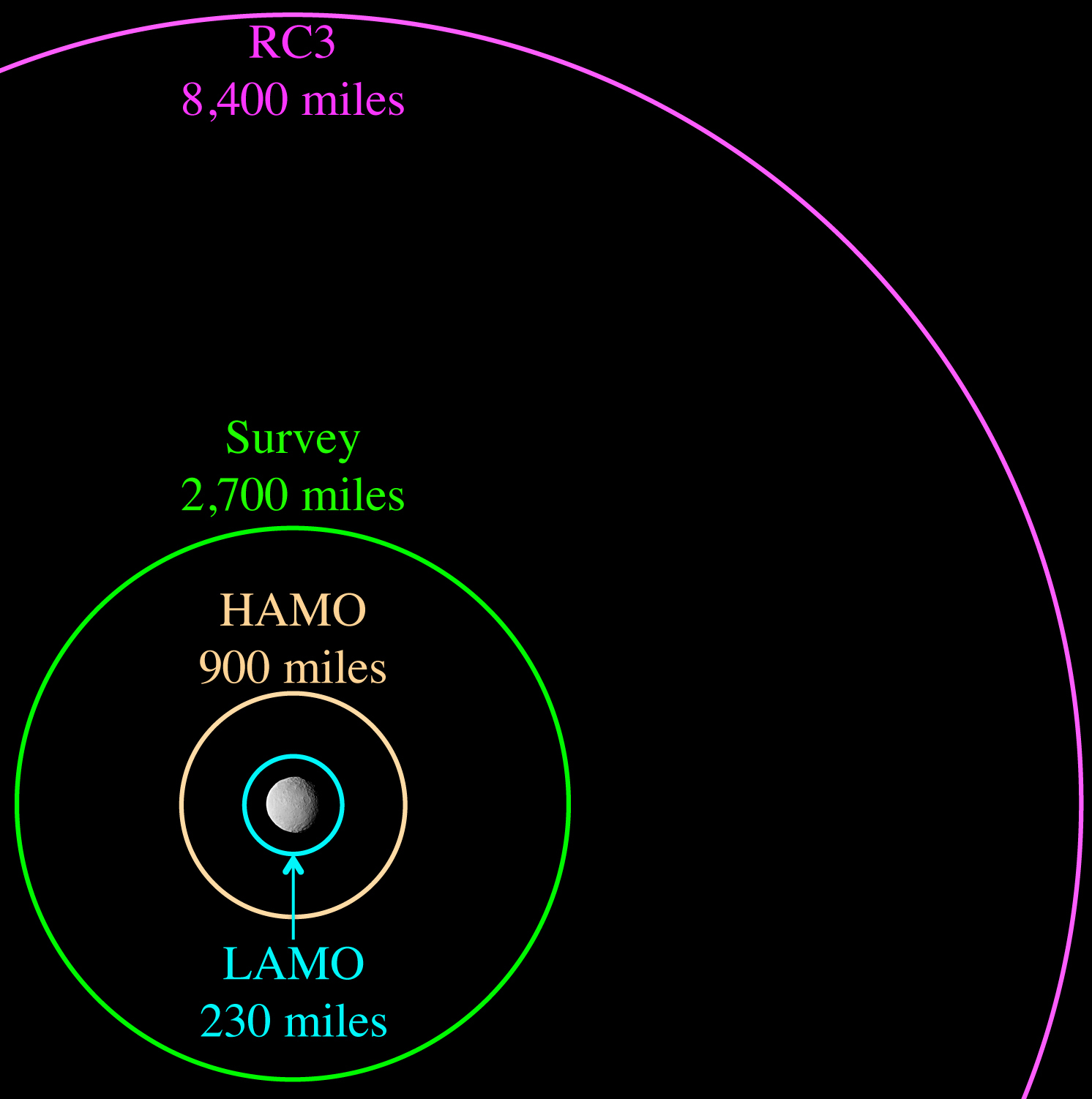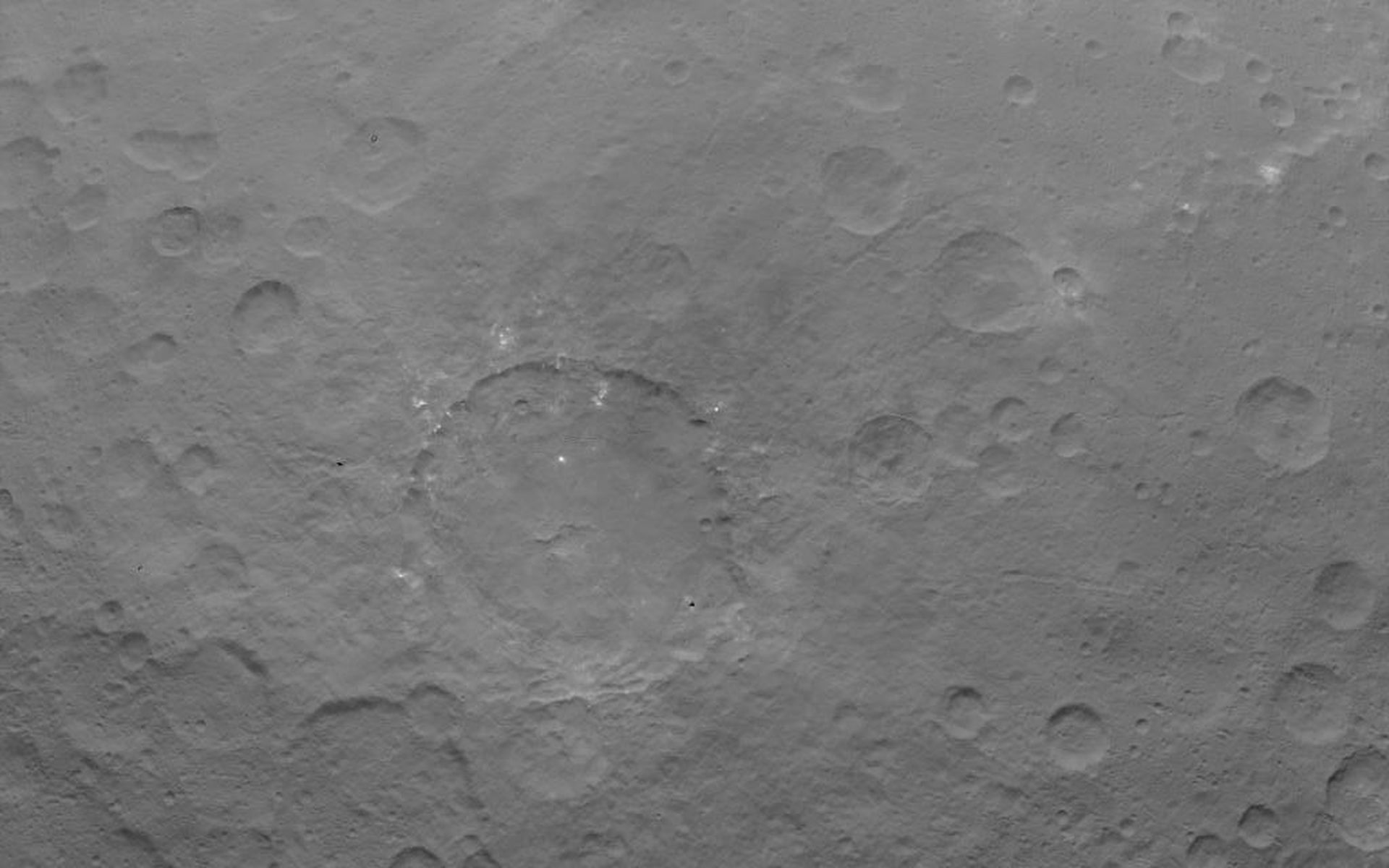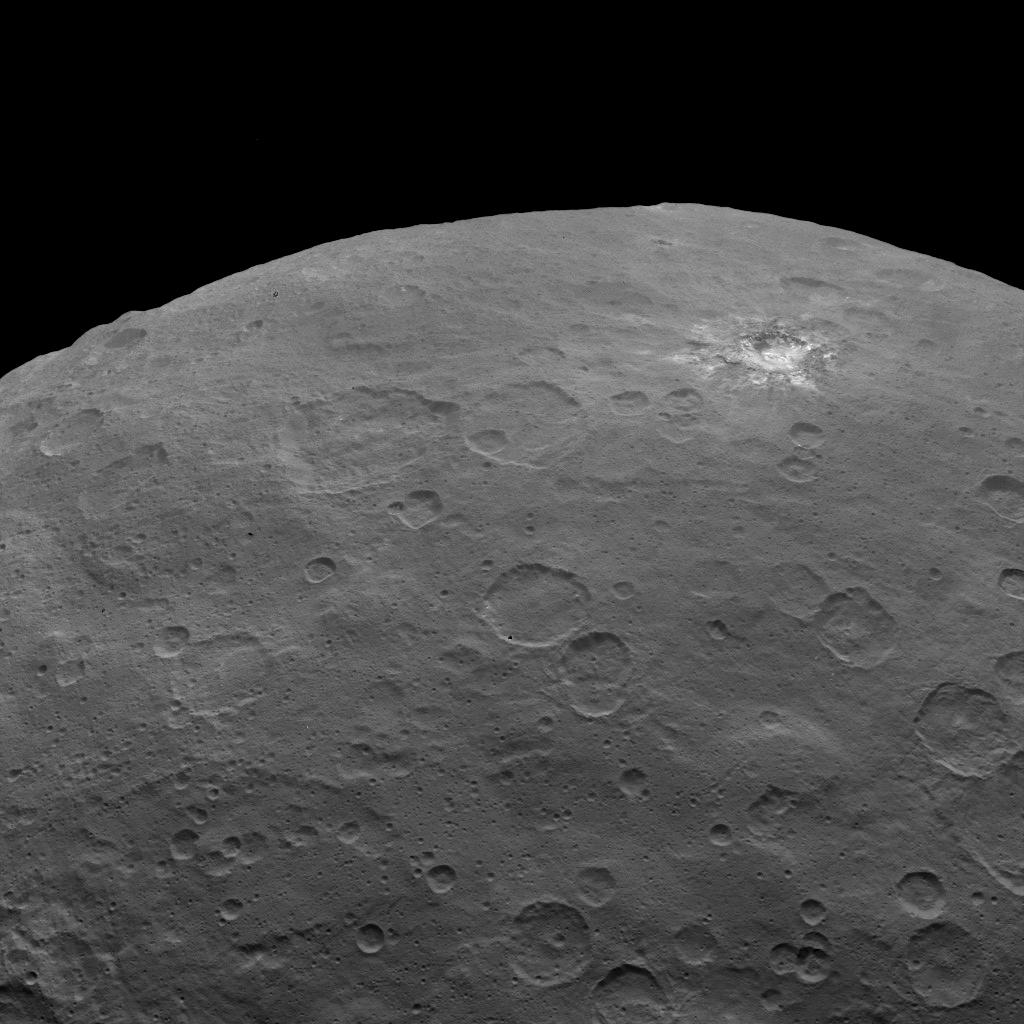RGClark
Mathematician
- Joined
- Jan 27, 2010
- Messages
- 1,635
- Reaction score
- 1
- Points
- 36
- Location
- Philadelphia
- Website
- exoscientist.blogspot.com
...
The next orbit is called Survey.

Can't wait to closest approach!

Bob Clark
...
The next orbit is called Survey.


This one is centred on another interesting surface feature, possibly a cryovolcano.


A new view of Ceres, taken by NASA's Dawn spacecraft on May 23, shows finer detail is becoming visible on the dwarf planet. The spacecraft snapped the image at a distance of 3,200 miles (5,100 kilometers) with a resolution of 1,600 feet (480 meters) per pixel. The image is part of a sequence taken for navigational purposes.
[...]
I wanted these white spots to be something cool and radical. Instead they'll turn out to be something mundane. Always is that way..unfortunately.

This image of Ceres is part of a sequence taken by NASA's Dawn spacecraft on May 22, 2015, from a distance of 3,200 miles (5,100 kilometers) with a resolution of 1,600 feet (480 meters) per pixel.

Someone suggested the bright spots are overexposed. Could reducing the exposure level increase the detail visible in the spots?
Bright Spots in Ceres' Second Mapping Orbit

http://www.nasa.gov/jpl/dawn/pia19568/bright-spots-in-ceres-second-mapping-orbit
Bob Clark


This image, taken by NASA's Dawn spacecraft, shows dwarf planet Ceres from an altitude of 2,700 miles (4,400 kilometers). The image, with a resolution of 1,400 feet (410 meters) per pixel, was taken on June 6, 2015.
Without spectral data, I don't dare to speculate ... but it looks to me that it might not seem so bright due to the angles of illumination and reflection... There seems to be awfully bright spots at the crater rim.
Another thing is how shallow the craters seem to be, compared to say those on the Moon... It might confirm that under the surface, it is composed of a material which would rebound more, or fill the craters back... say ... ice?
